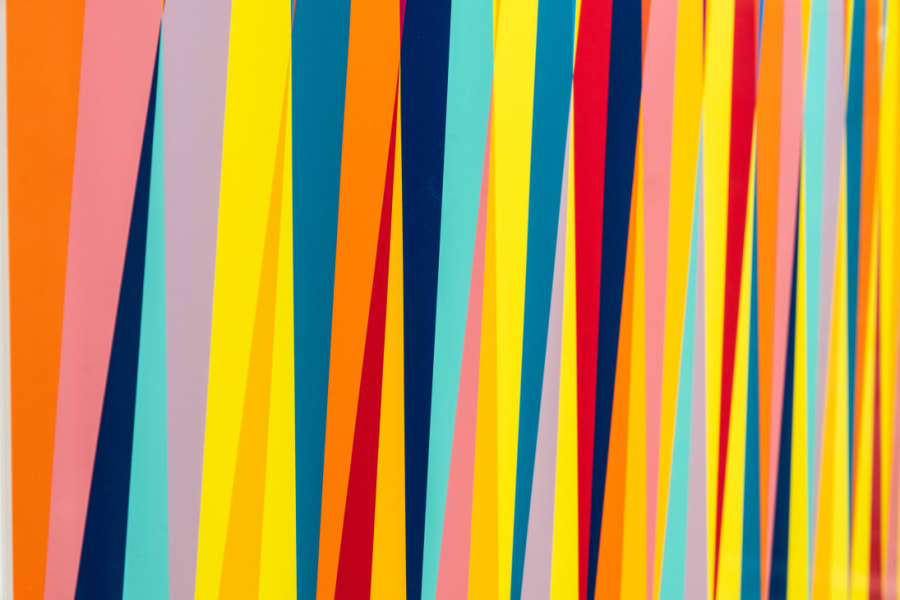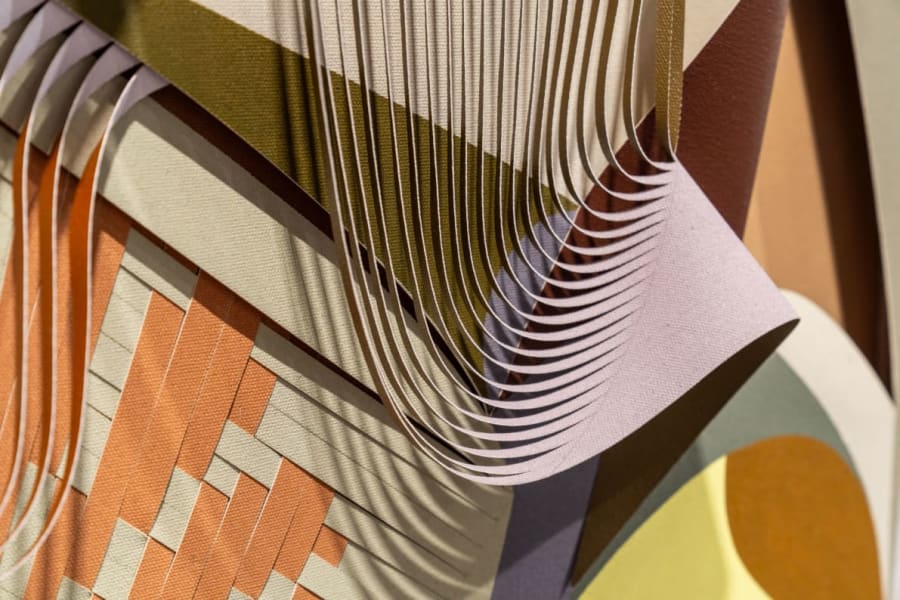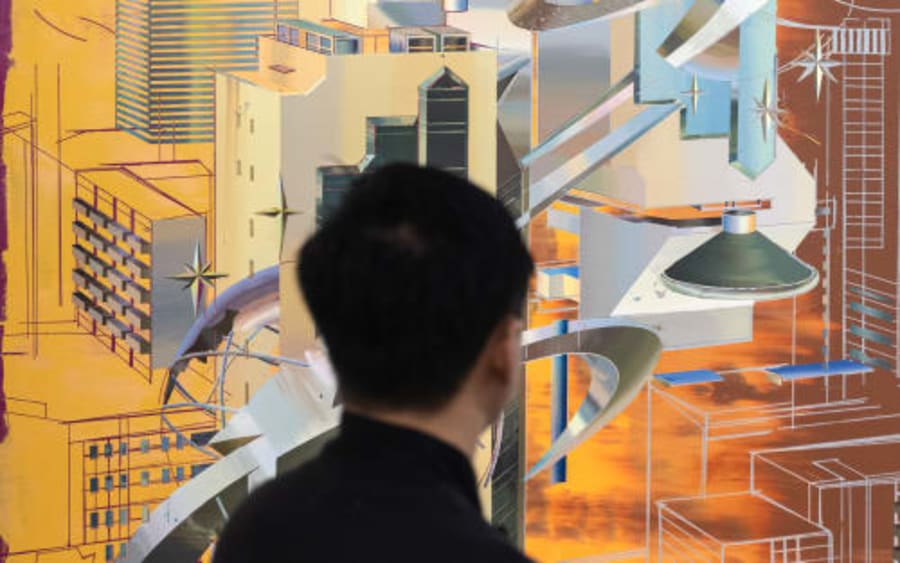The NFT tale of boom and bust, and the part it has played in the art world, has been readily documented by The Art Basel and UBS Art Market Report. ‘From a peak of USD 2.9 billion in 2021, sales of art-related NFTs on NFT platforms outside the art market have declined for two years, reaching USD 1.2 billion in 2023, down by 51% year-on-year but still over 60 times the size of the market in 2020 (USD 20 million),’ the 2024 report states.
The popularity and value of NFTs have been greatly tied to the value of the cryptocurrency Ethereum, since most NFTs are created, traded, and stored on the Ethereum network (it had a market share of 72.3% in 2023, according to CoinGecko, an independent cryptocurrency data aggregator). From its all-time high of USD 4,810.97 in 2021 to a sharp decline in value in 2022 (reaching a low of USD 994.41) and then slow growth in 2023, this year has seen Ethereum rebound to an average of USD 3,148.55, according to Etherscan, an online public ledger for Ethereum transactions. Alternative platforms for minting NFTs – such as Bitcoin, Solana, and Polygon – are also on the rise.
So, as Ethereum and other major cryptocurrencies bounce back in 2024, can we expect the art-related NFT market to do the same?
‘2024 has been a year of new clarity for the NFT market in some ways,’ says Devang Thakkar, the global head of Christie’s Ventures and lead of the company’s Art+Tech Summit, which takes place this year in New York City (July 17 – 18). Thakkar says many regulatory hurdles for cryptocurrency have recently been cleared in the European Union, Hong Kong, and the US, giving the ecosystem a ‘positive boost.’
‘I won’t speculate directly on whether the NFT market is going up or down – I’ll leave that to the folks who are trading this very, very closely,’ Thakkar says. Sales of art-related NFTs from January to the end of June 2024 are slightly down on the same period in 2023, according to the data company Statista. ‘These ups and downs also happen in the traditional art world and traditional financial markets. What we look for are artists who are going to define the next generation of digital art. It was very clear to us after the Beeple sale [when Everydays: The First 5000 Days sold for USD 69.3 million with fees at Christie’s in March 2021] that digital art had a voice, and we continue to push the envelope on bringing great digital artists to market.’
Most art-related NFT sales take place independently of the traditional art world system, with artists minting their own works and selling them directly to collectors on NFT marketplaces, who then trade them on the secondary market. However, according to The Art Basel and UBS Survey of Global Collecting in 2023 there has been a significant drop in the popularity of external online platforms among high-net-worth individuals. They were the first choice for purchasing for 17% of collectors in 2022, which fell to just 8% in 2023, including NFT platforms (3%).
However, NFTs are also being sold by traditional art market players, such as auction houses and galleries. The London- and Baku-based Gazelli Art House, for example, set up its digital arm GAZELL.iO in 2015 and, in 2020, it launched a gallery dedicated to digital art in London. Its latest show Awaken, Metamagical Hands (July 19 – September 28) shows works ‘by artists who have pushed the boundaries of what can be visualized and created with code,’ according to a press statement, and will include NFTs by artists such as Joshua Davis, Golan Levin, LIA, and Helena Sarin.
GAZELL.iO also has its own NFT marketplace, which the gallery’s director Mila Askarova says organically brings in sales, but she notes that the market this year has been a little slower. ‘We have found ourselves doing more proactive, targeted reach out this year than last year,’ she says. ‘I think contextualizing [NFTs] in exhibitions is helpful for us. The sales element is normally a physical work with a digital component to it. I think that combinational offering is something we’re quite curious to develop further just to write off the dips in the market.’ Robert Norton, the co-curator of the Awaken, Metamagical Hands show and the chief executive and cofounder of Verisart, an NFT minting and certification platform, agrees: ‘These two communities [Web3 and the traditional art market] are getting more closely aligned. That said, people are still finding the market tough in terms of selling NFTs unless you already have a good community of collectors.’
Norton points to key events in 2024 that have demonstrated this market alignment: the well-attended NFT Paris conference in February; the ‘finale’ of Bright Moments’s ‘Crypto Citizens’ project (2021-24) in Venice during the vernissage of the Biennale; and the inaugural edition of the Digital Art Mile fair and conference during Art Basel in June.
Experts agree that the NFT market is consolidating and refocusing attention onto the broader subject of digital art. ‘Because of the NFT boom, we never had a moment to capture the real meaning of what digital art will be for the long run,’ Thakkar says. ‘We finally had a moment in the past year to stop and say, actually this is not new, digital art has been around since the 1970s. Let’s talk about it.’
Several books have recently been published in a bid to contextualize current trends, including On NFTs (Taschen, 2024), edited by the artist and writer Robert Alice, and Right Click Save (Vetro Editions, 2024) by Alex Estorick, the editor of the eponymous online magazine. While the former acts as an art historical survey of blockchain art, the latter aims to create ‘a series of “crypto histories”,’ says Estorick, ‘that situate ongoing developments within an expanded understanding of art.’
This increased focus on canonization and education around digital art and NFTs is seen as a vital step towards its future success. ‘There’s more scholarship and contextualization – in the past it was a little bit difficult to determine what was by an interesting artist and what was just a collectible,’ Norton says. Estorick, meanwhile, says he has been ‘principally invested in pedagogy and trying to drive critical conversations around blockchain, NFTs, and smart contracts as technologies [and] also the ways in which current digital art relates directly to previous movements.’
Museums have been key to this pedagogy, acquiring seminal digital works and staging shows. Examples include the Centre Pompidou’s 2023 acquisition of 18 works that deal with the relationship between blockchain and artistic creation, including its first NFTs; and the Los Angeles County Museum of Art’s gift of 22 digital works from a collector using the alias Cozomo de’ Medici in the same year.
There has also been a proliferation of conferences on the topic of art and technology. Alongside NFT Paris and the Digital Art Mile, the Digital Summit at Art Dubai took place in March and the Art Market 2050 conference will open on 11 October. Christie’s Art+Tech Summit, which has been running annually since 2018, is the next in the calendar. The two-day conference brings together experts from across disciplines. This year’s speakers include the artists Refik Anadol and Beeple; Pace Gallery chief executive Marc Glimcher; Princeton University professor Dr. Sanjeev Arora; and Steve Wozniak, the cofounder of Apple. ‘We think there will be collaborations and the spark of new ideas,’ Thakkar says.
In explaining the future of NFTs, Thakkar references Geoffrey Moore’s book Crossing the Chasm (1991), which looks at the adoption of high-tech products by customers. Moore argues that to ‘cross the chasm’ between the ‘early adopters’ of a technology and the more pragmatic ‘early majority,’ new products must focus on one group of customers at a time, using each group as a base for marketing to the next. Thakkar says NFTs are in the process of crossing this chasm: ‘The dust has settled. NFTs are not just cool and hypey anymore. Now we have to figure out regulations and safety and publish books. We have to do all the boring but necessary stuff, which could take anywhere between 5 months to 5 years. But this will serve as the backbone of where this market goes.’
You can download the 2024 Art Basel and UBS Art Market Report here
Aimee Dawson is a British writer, editor, and speaker on the art world. Her areas of specialty include art in the digital sphere; art and social media; and Modern and contemporary art in the Middle East.
Caption for top image: John Maeda, Morisawa series, 1996/2024. C-Type print on photo paper accompanied by ERC-721 Token. Courtesy the Artist & Gazelli Art House. All works certified by Verisart.
Published on July 12, 2024.


